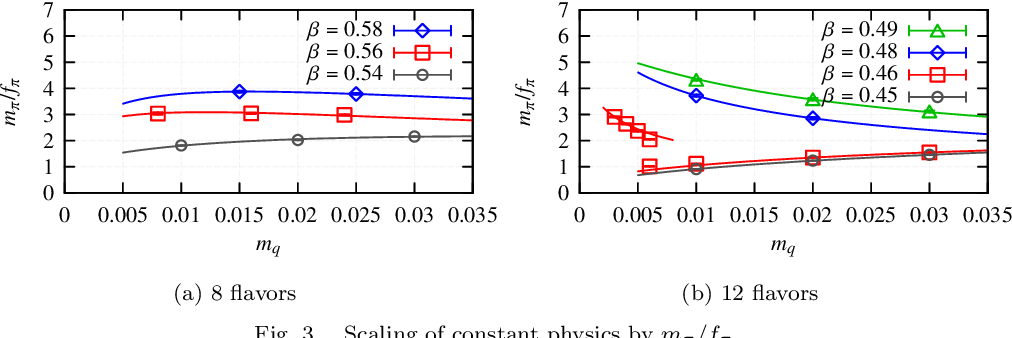


"They existed in the very early fractions of a second of the universe and then they decayed away," Hewett told LiveScience, referring to the rare particle flavors.

Same goes for leptons: While electrons abound, some of the other flavors, such as muons and taus, are rarely found in nature. Protons and neutrons, in turn, contain just up and down quarks top and bottom, charm and strange quarks are nary to be found. The elements in the periodic table, such as carbon, oxygen and hydrogen, are composed of protons, neutrons and electrons. (Image credit: Karl Tate, LiveScience Infographic Artist)Īnd while particles do come in many flavors, our universe is preferentially made up of just a few. Just for future users, as I am sure you have seen this quark flavor/ standard model chart countless times, I'll include it anyway.Here's a breakdown of the Standard Model and the tiny particles it is responsible for. It corresponds with the existence of 8 generators of SU (3) implying the existence of eight gluon types to act as its force carrier. The stipulation that the SU(3)c group should be local – that is, that its transformations be allowed to vary with space and time – determines the properties of the strong interaction. Every quark flavor f, each with subtypes fB, fG, fR corresponding to the , forms a triplet: a three-componentquantum field which transforms under the fundamental representation of SU(3)c. SU(3)c color transformations correspond to "rotations" in color space (which, mathematically speaking, is a complex space). Just as the laws of physics are independent of which directions in space are designated x, y, and z, and remain unchanged if the coordinate axes are rotated to a new orientation, the physics of quantum chromodynamics is independent of which directions in three-dimensional color space are identified as blue, red, and green. I am pretty sure you know the different flavors and their mass and charge differences, but the color question in one way seems to be moot, they are arbitrarily assigned as long as the hadrons get three giving white and the mesons get their whiteness from the anticolor of the antiquark. Color is always attractive, but it can be "nullified" in certain color combinations so that stable bound states of quarks appear, as with the rest of the quote.įlavor characterizes the weak interactions of the quarks. The quark forces are attractive only in "colorless" combinations. The identifications are not random, they are within the SU(3)xSU(2)xU(1) group representations and algebra of the standard model of particle physics. So it can also come in the three color quantum numbers, for identification called red blue and green ( analogous to the weak Strange Charm Bottom Top). One is talking quantum mechanics and attributed quantum numbers to elementary particles.Ī simple quantum number is charge and it it assigned to quarks ( and antiquarks) as +/-1/3 or +/-2/3 as in the tableĬharge is connected with the electromagnetic force.įlavor is assigned as a quantum number to each quark, and it is connected with the weak interaction.Įach quark at the same time is connected with the strong color force of quantum chromo dynamics.


 0 kommentar(er)
0 kommentar(er)
